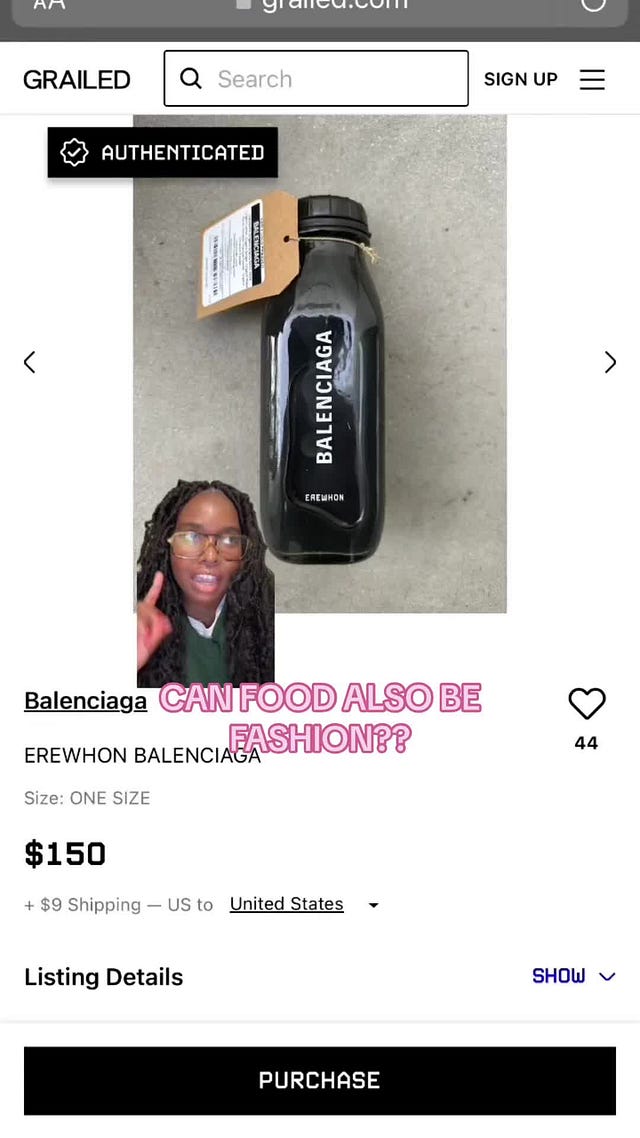Up Next for 2025? Food is Fashion.
a case study on the louis vuitton cafe, little treat culture, and shifting patterns in gen z consumption
FOOD IS FASHION. At the end of last year, I made the prediction via my tiktok/instagram that we would start seeing food being consumed similarly to how we consume fashion. At the time, this was anchored by collabs like Balenciaga and Erewhon (perishable juices were being resold for $150 on grailed), the strategic Mytheresa x Flamingo Estate collabs, and the ways that consumers (particularly gen z and millennials) interacted with food via social media — Laila Gohar’s food installations are especially known to strike a niche chord (biiiig overlap with the Fashion Community). This convergence between food and fashion is fascinating — like, in the metaphysical sense, is it not true that bumps of caviar coexist with the black mini kelly?
As we hit the hyper-commodification of goods via social media, where do we draw the line between utility (food and clothes as basic goods) and luxury (when food and clothes are co-opted by status)?
Well thank God for some real fckn theory (Bourdieu, ily)! In the Sociology of aesthetics and taste, theorists like Gronow have been known to posit that “fashion” can be interpreted as more than just clothing. Through my own blended interpretation and analysis of this research, I have come to believe that fashion is inclusive of anything where an applied aesthetic has influence on consumption.
This is important, because when we analyze consumer trends, it’s typically based on category (e.g., consumption of clothes vs shoes), rather than zooming out to assess patterns of behavior. Last year, bows were rapidly affixed to dresses, hair, baguettes, and ice cubes poured over diet coke. Yet, could you imagine what we would have missed if we had only thought about bows in a silo? As the fashion that we wear?
Zooming out, what contextual richness do we miss by not evaluating consumers as whole people, rather than by just their attributes (and mirrored, piecemeal consumption)? On a similar thread, I contributed to a larger case study on the way consumers are shifting their consumption based on the ways in which their identity has been sold back to them via their algorithms, which is NOT the purpose of this letter… but important to note as we all start to float ideas of what’s Up Next for 2025.
I’m somehow back to where I started a year ago, yet also somewhere entirely new? All of a sudden, we have the viral Louis Vuitton cafe (that’s still.. buzzy?) and gen z “little treat” culture to serve as a giant mirror (case study) for the energy that will underlie all of the big bets of next year…. lemme explain —






